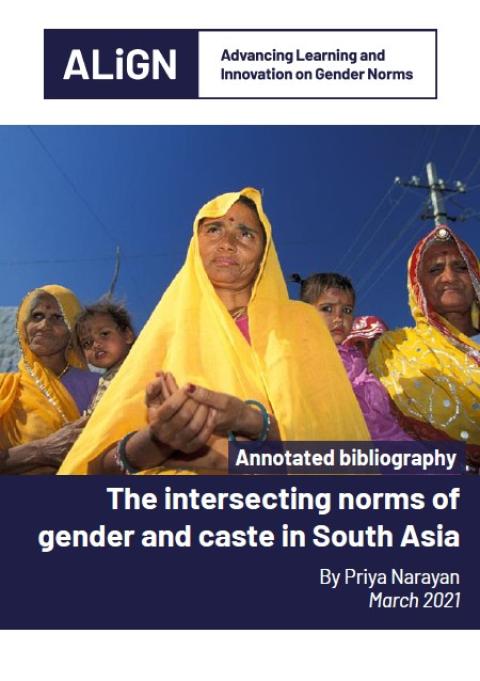- Biblio/Lit. review
- 22 March 2021

Gender norms intersect with other norms, such as those relating to race, class and disability, and multiply vulnerabilities for individuals at the intersections of various inequalities. For these members of multiple minority groups, the intersections of such norms can affect access to services, experiences of violence, education attainment, financial inclusion, wellbeing, and voice and decision-making in public, among other areas. As a result, to contribute to ALIGN’s growing body of work on intersectionality and gender norms, this annotated bibliography will explore the issues of intersectionality, particularly of gender and caste. Based on the broad categories of impact listed above, it examines mostly open-source publications to get a deeper understanding of the impact that caste-gender intersections have on different groups.
About the author


Priya Narayan is an associate at Kantar Public (Singapore), a market research firm that partners with public sector clients to design and evaluate policies. She holds an MSc in Development Studies from the London School of Economics and Political Science (LSE). Her academic interests lie in gender and caste, and her MSc dissertation was on caste and secularism during the independence movement in India. Based in Singapore, she has worked and volunteered at local organisations AWARE (a women’s organisation) and HOME (an organisation for migrant workers), which aim to address the vulnerabilities that women at various intersections of inequality and marginality face. She hopes that through her work, such as on the annotated bibliography, she is able to deepen her understanding of gender and other inequalities, and how norms can be used as a means to effect sustainable change.
- Tags:
- Intersectionality
- Countries / Regions:
- South Asia
Blog
7 January 2022

Interview
3 March 2021

Interview
16 September 2020
